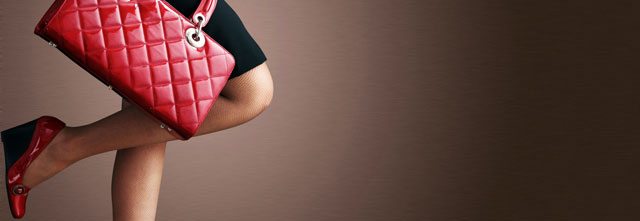The Great Recession and the coinciding explosion of smart phones and tablets persuaded even high-end luxury labels to become tech savvy. But open access to once-exclusive merchandise has led some to wonder if the meaning behind luxury itself is becoming clouded, which is why savvy brands and retailers are focusing on quality, heritage and craftsmanship.
The Luxury Marketing Council’s Greg Furman, founder and CEO, says major brands have already begun shifting their ad messages to concentrate on quality.
“Among the very wealthy in the U.S., only 10% got their money through heritage or celebrity,” Furman says. “The other 90% worked their way up from the middle class. But they were so busy working, they never got to know the best of the best. So now brands are realizing they can educate customers to understand heritage and craft, and their importance to luxury.”
Among consumers making $100,000 or more per year, 96% say quality is an important factor in their apparel purchase decision, according to the Cotton Incorporated Lifestyle Monitor™ Survey. That is significantly more than those earning less than $25,000 (85%). And it is higher than those who earn between $50,000 and $74,000 (93%). The Labor Department puts the average U.S. household income at $51,413.
Even though social media opened up luxury to the masses, the medium is still a very valuable tool for the core customer.
Media strategist Howard Ruben, CEO of his Los Angeles-based firm, points out that Ralph Lauren has close to five million “likes” on its Facebook page.
“I’m sure many of these men and women are aspirational shoppers,” Ruben says. “So, in the sense that more people have free access to the message, yes, social media has made luxury more mainstream. But, I don’t think it has really had a big effect on who is buying the brand. In that regard, the market is still mostly comprised of those with discretionary income who place their emphasis on the brand and not the price.”
[quote]
Saks Inc.’s Stephen Sadove recently said as much when he told investors, “We are continuing to stay focused on our core merchandising, service and marketing strategies, but we know that our future success depends on our ability to quickly evolve with the customer and fully embrace omni-channel retailing.”
Three-fourths of consumers making $100,000 or more per year browse the Internet for apparel, and they spend about two hours doing so each month, according to Monitor data.
When shopping in stores, high-end shoppers buy most of their apparel at department stores (26%), chain stores (22%), and specialty stores (20%), Monitor data show. Only 9% buy most of their apparel at mass merchants, compared to 33% of those earning less than $50,000.
Luxury spending will reach $244 billion across 13 discretionary categories, including fashion and home decorating, according to the 2012 Survey of Affluence and Wealth in America, co-produced by American Express Publishing and Harrison Group.
While the luxury customer stands out from mainstream shoppers, the Affluence and Wealth survey showed they are segmented within their own group: Upper Middle Class consumers with discretionary incomes ranging from $100,000 to under $150,000; Core Affluent consumers with discretionary incomes of at least $150,000, with household incomes of under $450,000; and the “One Percenters.”
The Affluence and Wealth study found there has been a shift from value-driven spending, and fewer luxury consumers are trading down to lower quality or lower priced items (from 45% in Q1 of 2010 to 31% today.)
“These families can be heard to say about a trip, a dress, an automobile, a piece of jeweler or even an investment, ‘I know I spent more than I had to—but it was worth it!,’” says Cara David, senior vice-president at American Express Publishing.
Where spending more for apparel is concerned, more than six out of 10 (62%) consumers making $100,000 or more per year are willing to pay more for natural fibers like cotton, according to the Monitor. Fully 80% say better quality garments are made from natural fibers like cotton. And nearly 8 out of 10 (78%) of these high-spending consumers prefer their clothes to be made of cotton and cotton blends. The next closest fabric was wool, at 3%.
Nordstrom recently announced it plans to grow its U.S. stores and build its online business. Neiman Marcus Group Inc.’s fiscal third quarter earnings increased 35%, and the retailer plans to expand its Cusp store-within-a-store to all of its units, in a move to modernize and fine-tune its contemporary merchandise assortments. Both retailers have strong outlet sales, even though customers are returning to the full-price stores.
Rather than chase after customers who, post-recession, are not buying luxury product, Furman says these brands must win a greater share of the wallets of the very best customers. “They must inspire customers to buy the furnishings, accessories and shoes within the brand– and bring their high wealth friends with them.”
